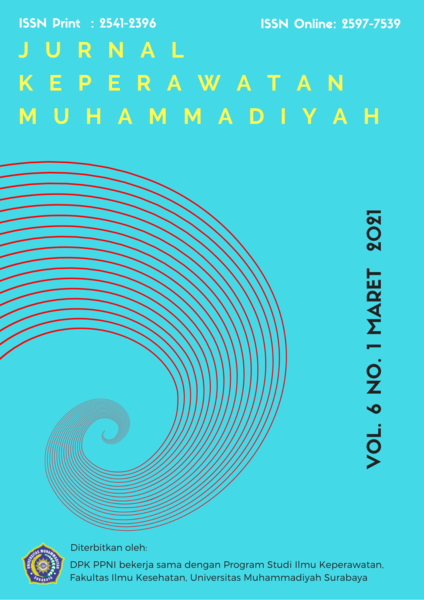Evaluasi Penerapan Early Warning Score di Ruang Rawat Inap Dewasa
DOI:
https://doi.org/10.30651/jkm.v6i1.6488Keywords:
Early Warning Score, EvaluationAbstract
Early Warning Score (EWS) is one of the instruments used to assess the patient's physiological deterioration and is one of the assessments in hospital accreditation. The application of the EWS can predict patient outcomes in the form of mortality, length of stay, and re-hospitalization. The purpose of this study was to evaluate the application of EWS in the inpatient room. This study was a prospective observational cohort study of patients in adult wards (≥16 years) over a while (1 month). The number of samples was 256 patients. The instruments used in this study were a demographic data questionnaire and an EWS observation sheet. Descriptive statistics were used for patient characteristics, and EWS monitoring documents. The results showed that 100% of the EWS sheet documentation was incomplete, if this examination sheet was not carried out correctly it would affect the subsequent patient handling and patient outcomes both related to illness and death. Monitoring and evaluation related to the implementation of the EWS are very much needed in the future for the improvement of hospital services as a whole. Keywords: Early Warning Score, EvaluationReferences
Kemenkes RI. 2011. Standar Akreditasi Rumah Sakit. Direktorat Jenderal Bina Upaya Kesehatan
Williams, B., Alberti, G., Ball, C., Ball, D., Binks, R., & Durham, L. 2012. Royal College of Physicians, National Early Warning Score (NEWS), Standardising the assessment of acute-illness severity in the NHS, London
Opio, M. O., Nansubuga, G., & Kellett, J. 2013. Validation of the VitalPACâ„¢ Early Warning Score (ViEWS) in acutely ill medical patients attending a resource-poor hospital in sub-Saharan Africa. Resuscitation, 84(6), 743-746
Pratama, B. A., & Mulia, A. P. P. B. 2017. Trend Gross Death Rate and Net Death Rate per year at PKU Muhammadiyah Hospital in Surakarta in 2011–2015. IJMS-Indonesian Journal on Medical Science, 4(2).
Mestrom, E., De Bie, A., van de Steeg, M., Driessen, M., Atallah, L., Bezemer, R., ... & Korsten, E. 2019. Implementation of an automated early warning scoring system in a surgical ward: Practical use and effects on patient outcomes. PloS one, 14(5).
Patterson, C; Maclean, F; Bell, C ; Mukherjee, E. Bryan, Bell, D. 2011. Early warning systems in the UK: variation in content and implementation strategy has implications for a NHS early warning system. Clinical Medicine, Vol 11, No 5: 424–7
Georgaka, D., Mparmparousi, M., & Vitos, M. 2012. Early Warning Systems. Hospital Chronicles, Volume 7, Supplement 1: 37–43
Pagala, I., Shaluhiyah, Z., & Widjasena, B. 2017. Perilaku Kepatuhan Perawat Melaksanakan SOP Terhadap Kejadian Keselamatan Pasien di Rumah Sakit X Kendari. Jurnal Promosi Kesehatan Indonesia, 12(1), 138-149
Desy, K. 2017. Gambaran Pelaksanaan Clinical Response Early Score(NEWS) oleh Perawat di Rumah Sakit Siloam Bali. University Pelita Harapan Karawaci
Mentari, D. 2017. Gambaran Pelaksanaan Observasi Pasien Dengan Early Warning Score (EWS) di Rumah Sakit Siloam Kupang. University Pelita Harapan Karawaci
Hutabarat, V., Novieastari, E., & Satinah, S. 2020. MODIFIKASI ASESMEN EARLY WARNING SYSTEM UPAYA PENINGKATAN PENERAPAN KESELAMATAN PASIEN. Jurnal Keperawatan Komprehensif (Comprehensive Nursing Journal), 6(2), 112-120
Downloads
Published
Issue
Section
License
- Penulis tetap memegang hak atas karyanya dan memberikan hak publikasi pertama kepada jurnal ini yang secara simultan karya tersebut dilisensikan di bawah:Â Creative Commons Attribution-ShareAlike 4.0 International (CC BY-SA 4.0)













